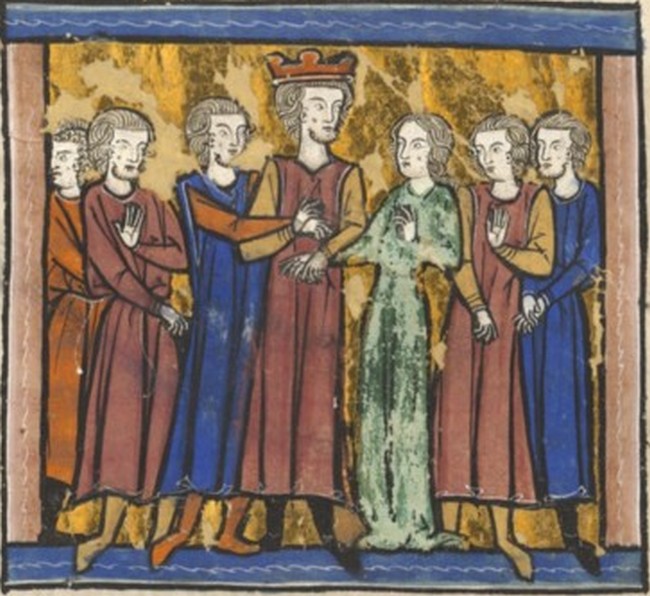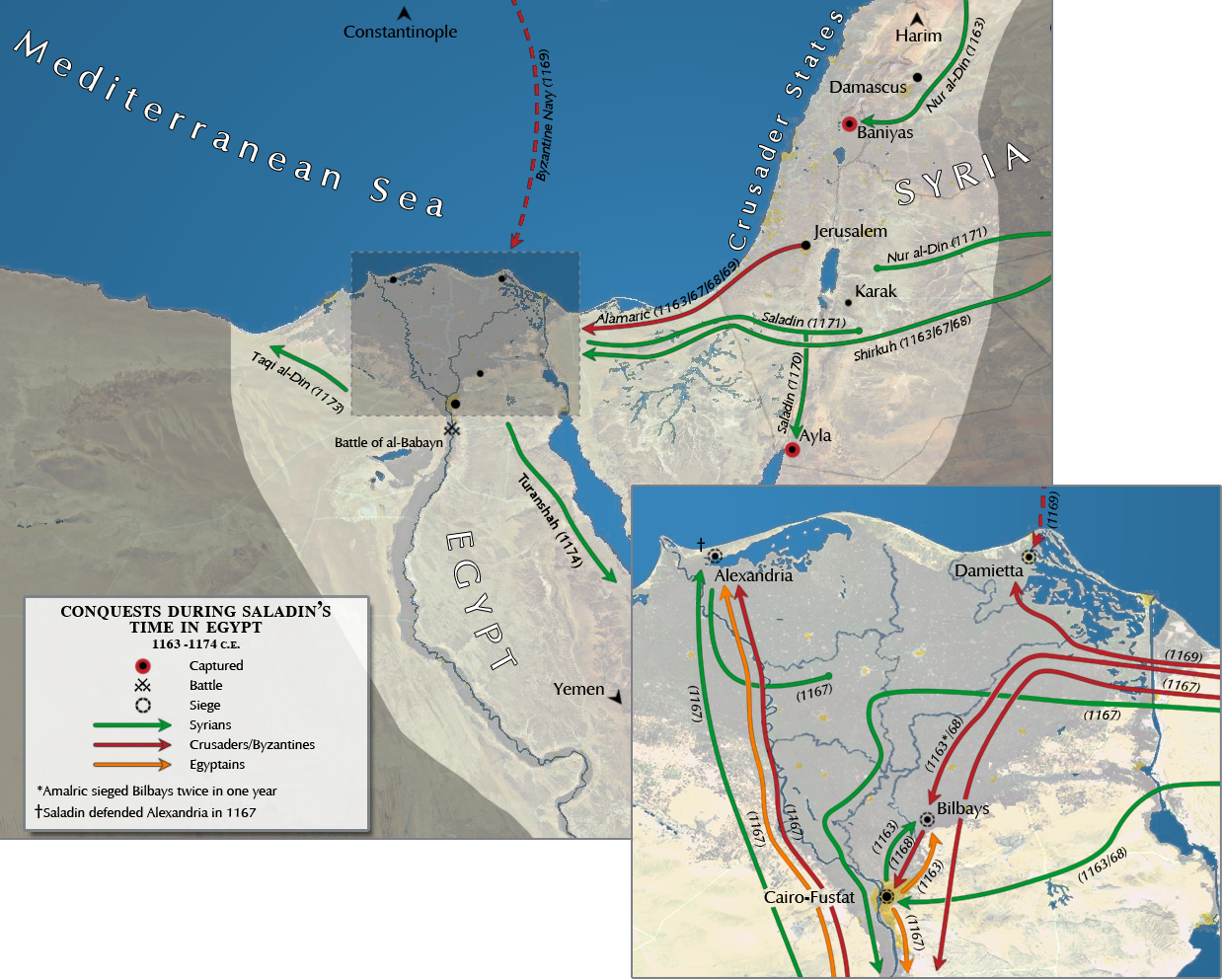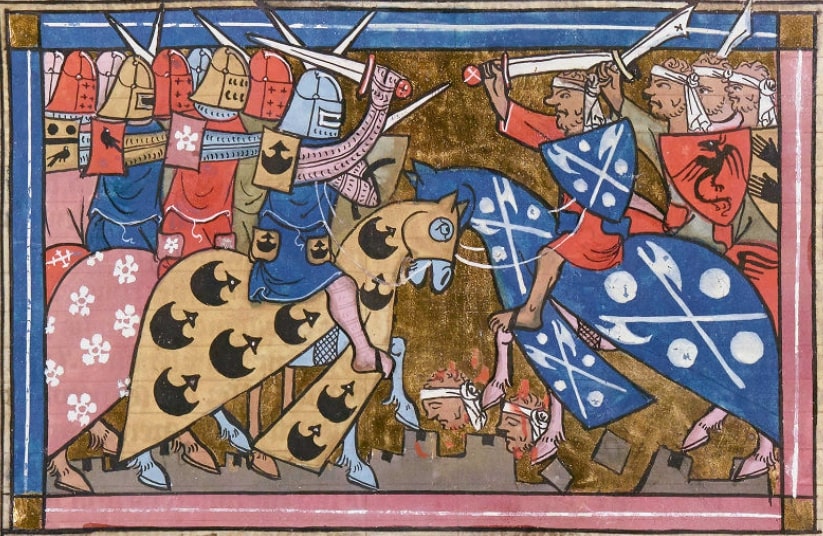|
July 4
Events Pre-1600 * 362 BC – Battle of Mantinea: The Thebans, led by Epaminondas, defeated the Spartans. * 414 – Emperor Theodosius II, age 13, yields power to his older sister Aelia Pulcheria, who reigned as regent and proclaimed herself empress ('' Augusta'') of the Eastern Roman Empire. * 836 – '' Pactum Sicardi'', a peace treaty between the Principality of Benevento and the Duchy of Naples, is signed. * 993 – Ulrich of Augsburg is canonized as a saint. *1054 – A supernova, called SN 1054, is seen by Chinese Song dynasty, Arab, and possibly Amerindian observers near the star Zeta Tauri. For several months it remains bright enough to be seen during the day. Its remnants form the Crab Nebula. *1120 – Jordan II of Capua is anointed as prince after his infant nephew's death. *1187 – The Crusades: Battle of Hattin: Saladin defeats Guy of Lusignan, King of Jerusalem. *1253 – Battle of West-Capelle: John I of Avesnes defeat ... [...More Info...] [...Related Items...] OR: [Wikipedia] [Google] [Baidu] |
362 BC
__NOTOC__ Year 362 BC was a year of the pre-Julian Roman calendar. At the time, it was known as the Year of the Consulship of Ahala and Aventinensis (or, less frequently, year 392 ''Ab urbe condita''). The denomination 362 BC for this year has been used since the early medieval period, when the Anno Domini calendar era became the prevalent method in Europe for naming years. Events By place Persian Empire * Mausolus of Caria joins the revolt of the satraps of Anatolia against the Persian king Artaxerxes II. Egypt * King Agesilaus II of Sparta arrives with 1,000 men to assist Egypt in its fight with Persia. Greece * The outbreak of civil war in the Arcadian league leads to Mantinea fighting alongside Sparta and Athens, while Tegea and others members of the league side with Thebes. The Theban general, Epaminondas, heads the large allied army in the Peloponnesus. He is met by Sparta (led by Spartan general Archidamus III), Athens, and their allies in the Battle of M ... [...More Info...] [...Related Items...] OR: [Wikipedia] [Google] [Baidu] |
Song Dynasty
The Song dynasty (; ; 960–1279) was an imperial dynasty of China that began in 960 and lasted until 1279. The dynasty was founded by Emperor Taizu of Song following his usurpation of the throne of the Later Zhou. The Song conquered the rest of the Ten Kingdoms, ending the Five Dynasties and Ten Kingdoms period. The Song often came into conflict with the contemporaneous Liao, Western Xia and Jin dynasties in northern China. After retreating to southern China, the Song was eventually conquered by the Mongol-led Yuan dynasty. The dynasty is divided into two periods: Northern Song and Southern Song. During the Northern Song (; 960–1127), the capital was in the northern city of Bianjing (now Kaifeng) and the dynasty controlled most of what is now Eastern China. The Southern Song (; 1127–1279) refers to the period after the Song lost control of its northern half to the Jurchen-led Jin dynasty in the Jin–Song Wars. At that time, the Song court retreated south o ... [...More Info...] [...Related Items...] OR: [Wikipedia] [Google] [Baidu] |
1253
Year 1253 ( MCCLIII) was a common year starting on Wednesday (link will display the full calendar) of the Julian calendar. Events By place Europe * January 18 – King Henry I (the Fat) dies and is succeeded by his son Hugh II, who is only a few months old. His mother, Queen Plaisance of Antioch, claims the regency of Cyprus and the titular regency of Jerusalem. The High Court of Cyprus confirms her position, but the barons of Outremer require her attendance in person before they will recognize her. John of Ibelin, count of Jaffa, remains as ''bailli'', and Plaisance contemplates marrying John's youthful son Balian. Meanwhile, King Louis IX (the Saint), still staying at Acre, continues to administer the government. * Summer – The Kingdom of Galicia–Volhynia becomes a vassal state to the expanding Mongol Empire. Prince Daniel of Galicia is crowned "Rex Rusiae" and becomes officially an Orthodox subject of the Papal States. * July 4 – William II, c ... [...More Info...] [...Related Items...] OR: [Wikipedia] [Google] [Baidu] |
Kings Of Jerusalem
The King of Jerusalem was the supreme ruler of the Kingdom of Jerusalem, a Crusader state founded in Jerusalem by the Latin Catholic leaders of the First Crusade, when the city was conquered in 1099. Godfrey of Bouillon, the first ruler of the Kingdom of Jerusalem, refused the title of king choosing instead the title , that is Advocate or Defender of the Church of the Holy Sepulchre. In 1100 Baldwin I, Godfrey's successor, was the first ruler crowned as king. The crusaders in Jerusalem were conquered in 1187, but their Kingdom of Jerusalem survived, moving the capital to Acre in 1191. Crusaders re-captured the city of Jerusalem in the Sixth Crusade, during 1229–1239 and 1241–1244. The Kingdom of Jerusalem was finally dissolved with the fall of Acre and the end of the Crusades in the Holy Land in 1291. Even after the Crusader States ceased to exist, the title of "King of Jerusalem" was claimed by a number of European noble houses descended from the kings of Cyprus or th ... [...More Info...] [...Related Items...] OR: [Wikipedia] [Google] [Baidu] |
Guy Of Lusignan
Guy of Lusignan (c. 1150 – 18 July 1194) was a French Poitevin knight, son of Hugh VIII of Lusignan and as such born of the House of Lusignan. He was king of Jerusalem from 1186 to 1192 by right of marriage to Sibylla of Jerusalem, and King of Cyprus from 1192 to 1194. Having arrived in the Holy Land (where his brother Aimery of Lusignan was already prominent) at an unknown date, Guy was hastily married to Sibylla in 1180 to prevent a political incident within the kingdom. As the health of his brother-in-law, Baldwin IV of Jerusalem, deteriorated, Guy was appointed by Sibylla as regent for his stepson, Baldwin V of Jerusalem. Baldwin IV died in 1185, followed shortly by Baldwin V in 1186, leading to the succession of Sibylla and Guy to the throne. Guy's reign was marked by increased hostilities with the Ayyubids ruled by Saladin, culminating in the Battle of Hattin in July 1187—during which Guy was captured—and the fall of Jerusalem itself three months later. Follo ... [...More Info...] [...Related Items...] OR: [Wikipedia] [Google] [Baidu] |
Saladin
Yusuf ibn Ayyub ibn Shadi () ( – 4 March 1193), commonly known by the epithet Saladin,, ; ku, سهلاحهدین, ; was the founder of the Ayyubid dynasty. Hailing from an ethnic Kurdish family, he was the first of both Egypt and Syria. An important figure of the Third Crusade, he spearheaded the Muslim military effort against the Crusader states in the Levant. At the height of his power, Ayyubid territorial control spanned Egypt, Syria, Upper Mesopotamia, the Hejaz, Yemen, the Maghreb, and Nubia. Alongside his uncle Shirkuh, a military general of the Zengid dynasty, Saladin was sent to Egypt under the Fatimid Caliphate in 1164, on the orders of Nur ad-Din. With their original purpose being to help restore Shawar as the to the teenage Fatimid caliph al-Adid, a power struggle ensued between Shirkuh and Shawar after the latter was reinstated. Saladin, meanwhile, climbed the ranks of the Fatimid government by virtue of his military successes against Crusa ... [...More Info...] [...Related Items...] OR: [Wikipedia] [Google] [Baidu] |
Battle Of Hattin
The Battle of Hattin took place on 4 July 1187, between the Crusader states of the Levant and the forces of the Ayyubid sultan Saladin. It is also known as the Battle of the Horns of Hattin, due to the shape of the nearby extinct volcano of that name. The Muslim armies under Saladin captured or killed the vast majority of the Crusader forces, removing their capability to wage war. As a direct result of the battle, Muslims once again became the eminent military power in the Holy Land, re-capturing Jerusalem and most of the other Crusader-held cities and castles. These Christian defeats prompted the Third Crusade, which began two years after the Battle of Hattin. Location The battle took place near Tiberias in present-day Israel. The battlefield, near the village of Hittin, had as its chief geographic feature a double hill (the " Horns of Hattin") beside a pass through the northern mountains between Tiberias and the road from Acre to the east. The Roman road, known to t ... [...More Info...] [...Related Items...] OR: [Wikipedia] [Google] [Baidu] |
Crusades
The Crusades were a series of religious wars initiated, supported, and sometimes directed by the Latin Church in the medieval period. The best known of these Crusades are those to the Holy Land in the period between 1095 and 1291 that were intended to recover Jerusalem and its surrounding area from Islamic rule. Beginning with the First Crusade, which resulted in the recovery of Jerusalem in 1099, dozens of Crusades were fought, providing a focal point of European history for centuries. In 1095, Pope Urban II proclaimed the First Crusade at the Council of Clermont. He encouraged military support for Byzantine emperor AlexiosI against the Seljuk Turks and called for an armed pilgrimage to Jerusalem. Across all social strata in western Europe, there was an enthusiastic response. The first Crusaders had a variety of motivations, including religious salvation, satisfying feudal obligations, opportunities for renown, and economic or political advantage. Later crusades were ... [...More Info...] [...Related Items...] OR: [Wikipedia] [Google] [Baidu] |
1187
Year 1187 ( MCLXXXVII) was a common year starting on Thursday (link will display the full calendar) of the Julian calendar. Events By place Byzantine Empire * Spring – Emperor Isaac II (Angelos) sends a Byzantine expeditionary force under Alexios Branas to suppress the Vlach-Bulgarian Rebellion – but Alexios revolts against Isaac and is proclaimed emperor in Andrianople. He musters troops and advances on Constantinople in an attempt to seize it. However, Alexios is unable to bypass the city defenses and is defeated by the imperial forces led by Conrad of Montferrat, the emperor's brother-in-law. On the battlefield, Alexios is beheaded by Conrad's supporting footsoldiers and the rebel army flees the field. * Siege of Lovech: Byzantine forces under Isaac II besiege the fortress city of Lovech in north-central Bulgaria. After a three-month siege, Isaac is forced to accept a truce by recognizing the joint-rule of Peter II and Ivan Asen I as emperor's (or ''tsa ... [...More Info...] [...Related Items...] OR: [Wikipedia] [Google] [Baidu] |
Jordan II Of Capua
Jordan II ( it, Giordano) (died 19 December 1127) was the third son of Prince Jordan I of Capua and Princess Gaitelgrima, a daughter of Prince Guaimar IV of Salerno. He was, from at least May 1109, the lord of Nocera, and, after June 1120, Prince of Capua. The date and place of his birth are unknown, but it must have been later than 1080. He was married, before 1113, to Gaitelgrima, daughter of Sergius, Prince of Sorrento, a union which allowed him to extend his influence down the Amalfi coast from his castle at Nocera.A. Sennis"Giordano" Mario Caravale (ed.), ''Dizionario Biografico degli Italiani'' (Rome: 2003). Lord of Nocera The earliest attestation of Jordan as lord of Nocera dates to May 1109, but it sheds no light on the nature of his lordship (''dominatus''). Before falling to the troops of Count Roger I of Sicily, Nocera had been the central town of one of the subdivisions, either an ''actus'' (circuit, jurisdiction) or ''comitatus'' (county), of the Principality of S ... [...More Info...] [...Related Items...] OR: [Wikipedia] [Google] [Baidu] |
1120
Year 1120 ( MCXX) was a leap year starting on Thursday (link will display the full calendar) of the Julian calendar. Events By place Byzantine Empire * Siege of Sozopolis: Byzantine forces under Emperor John II Komnenos conquer Sozopolis in Pisidia, from the Sultanate of Rum. The Seljuk garrison is defeated while they are trapped between the Byzantine cavalry and the army (who is besieging the fortress). Levant * January 16 – Council of Nablus: King Baldwin II and Patriarch Warmund convenes an assembly at Nablus – establishing the earliest surviving written laws of the Crusader Kingdom of Jerusalem. The prelates and noblemen who attend the meeting confirm the clergy's right to collect the tithe and to bear arms "in the cause of defense". * Baldwin II grants the Knights Templar under Hugues de Payens and Godfrey de Saint-Omer a headquarters in a wing of the royal palace on the Temple Mount in the captured Al-Aqsa Mosque in the Old City of Jerusalem. * Su ... [...More Info...] [...Related Items...] OR: [Wikipedia] [Google] [Baidu] |
Crab Nebula
The Crab Nebula (catalogue designations Messier object, M1, New General Catalogue, NGC 1952, Taurus (constellation), Taurus A) is a supernova remnant and pulsar wind nebula in the constellation of Taurus (constellation), Taurus. The common name comes from William Parsons, 3rd Earl of Rosse, who observed the object in 1842 using a telescope and produced a drawing that looked somewhat like a crab. The nebula was discovered by English astronomer John Bevis in 1731, and it corresponds with SN 1054, a bright supernova recorded by Chinese astronomy, Chinese astronomers in 1054. The nebula was the first astronomical object identified that corresponds with a historical supernova explosion. At an apparent magnitude of 8.4, comparable to that of Titan (moon), Saturn's moon Titan, it is not visible to the naked eye but can be made out using binoculars under favourable conditions. The nebula lies in the Perseus Arm of the Milky Way galaxy, at a distance of about from Earth. It has a diame ... [...More Info...] [...Related Items...] OR: [Wikipedia] [Google] [Baidu] |

%2C_King_of_the_Romans.jpg)








